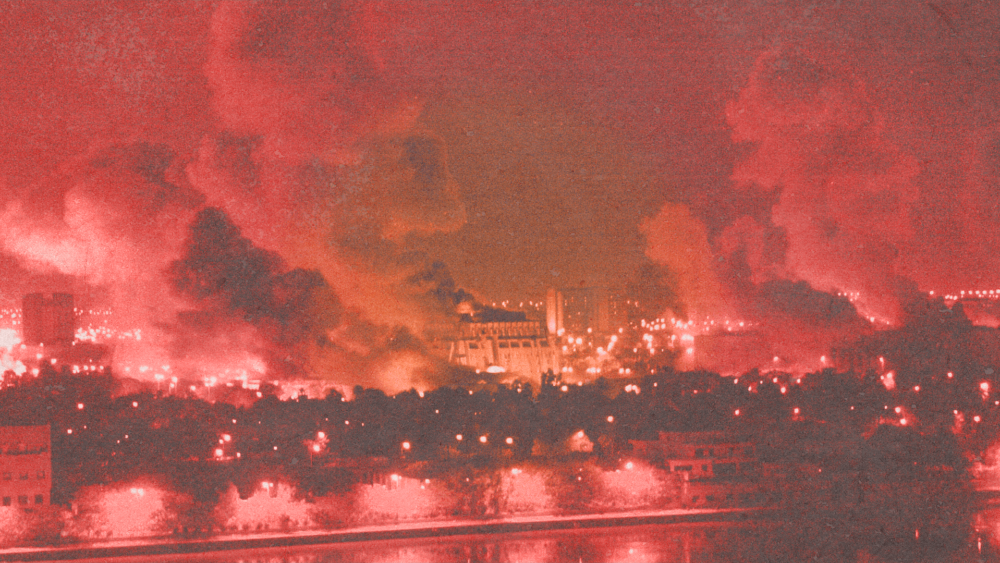Washington’s decision to completely dismantle the state and military apparatus contributed decisively to the prevalence of total chaos and the disintegration of Iraq’s social fabric
The events of September 11, 2001 and the subsequent American invasion (2003) and occupation of Iraq (2003-2011) were two landmark events, which made Washington the architect of regional destabilisation and insecurity in the Middle East for about a decade.
The timeline of the invasion refers to the US and British-led attack of “the willing” on March 19, 2003, in implementation of the US “New National Security Strategy,” which placed the issue of terrorism at the top of Washington’s political agenda.
At the same time, the George Bush administration claimed that the invasion had as a legitimising basis the need to enforce the resolutions of the Security Council (S.C.), according to which Iraq was called upon to comply with requests to disarm and monitor its nuclear program.
It is a fact that Decision 687 of the S.C. imposed a series of commitments on Iraq’s disarmament, including destroying any alleged weapons of mass destruction and cooperating with a UN Special Commission to inspect its nuclear program.
Iraq’s refusal to cooperate with the international community was quickly taken advantage of by the USA and Great Britain in order to request that the S.C. adopt a new decision authorising the use of force. With most UN member states opposed to violence and in favor of a peaceful resolution, the US and UK launched a unilateral invasion, which was criticised even by US officials, such as the US ambassador to Baghdad in 1990.
The unilateral military operation against Iraq was carried out in violation of Article 2(4) of the United Nations Charter, which introduces a general prohibition of the use of force, and Article 51, which recognises the “natural right of individual or collective self-defense, in the case that a State is attacked”, as well as article 39 of Chapter VII, which refers to the authorisation of the Security Council.
Regarding the right of self-defense the Bush and Tony Blair governments did not invoke information about an existing or imminent threat, instead they based their arguments on the fear of a future use of weapons of mass destruction by the Saddam Hussein regime.
US arrogance peaked when defense secretary Donald Rumsfeld rejected the report of the UN inspector general for the search, inventory and destruction of weapons of mass destruction, which concluded that no evidence had emerged to support speculation about weapons of mass destruction. After all, the minister of foreign affairs Colin Powell, in his speech at the United Nations on February 3, 2003, speculated that Iraqi weapons might be linked to terrorist organisations such as Al-Qaeda.
Based on the above, it is not surprising that the International Commission of Judges in Geneva concluded that the US committed a flagrant violation of the prohibition of the use of force, as its invasion of Iraq did not meet either of the two conditions under Chapter VII of the Charter Organisation of the United Nations.
However, the role of the UN was crucial in providing a legal cover for the so-called ‘multinational’ force in Iraq, and even under the guidance of the US and UK to defy the will of the duly elected Iraqi parliamentarians to attach the UN mandate to conditionalities, such as a timetable for the withdrawal of occupying troops or a refusal to privatise their natural resources.
But as history has taught, when a people is denied the ability to decide its own destiny through a peaceful political process, it will try to do so with guns and bombs. And here are the effects:
According to the Lancet medical review, until shortly before the emergence of ISIS in 2012, more than 1,455,590 Iraqis had lost their lives from fighting and explosions, and millions were wounded and displaced.
The ‘divide and conquer’ strategy that the American occupying power used to impose itself intensified the already existing ethnic and dogmatic passions. Washington’s decision to completely dismantle the state and military apparatus, contributed decisively to the prevalence of total chaos and the disintegration of the country’s social fabric.
The “liberation” of Iraq is captured in some of the most inhumane images, with open-air markets turning into rivers of blood and dismembered people, cities being wiped off the map, like Fallujah in 2004, prisoners being unspeakably humiliated by the ‘liberators’, as in Abu Ghraib.
In short, the invasion and occupation of the ‘prothyms’ in Iraq, includes all those ingredients that became fertilizer for ISIS propaganda and plunging the country into a vortex of chaos and blood.
According to president Barack Obama, “ISIS is the spawn of Al-Qaeda in Iraq that developed because of our invasion and is a sample of the side effects”.
Also according to Patrick Cockburn and his book “The Rise of the Islamic State”, ISIS is “the child of war” , of a supposed war on terror, as designed by Bush and Blair. Ηοwever, a war on terror would be directed against states that breed extremism like Saudi Arabia, but the two leaders chose a state whose government opposed religious fundamentalism and turned it into a magnet for hard-line jihadists in the power vacuum that followed the subversion of the legal government of the country.
And worst of all, the criminal operation of Bush and Blair brought terrorism to the safe streets of Europe, such as in Madrid, Paris, Berlin, London, Brussels and Nice.
Likewise, Islamic terrorism has spread to Africa through Al-Qaeda’s sister organisation Boko Haram and the Islamic State, exacerbating the humanitarian crisis that followed the ‘humanitarian’ war of the liberal ‘interventionists’ to overthrow the Muammar Gaddafi regime in Libya.
The war, which had a heavy cost for the Americans as well, with approximately 5,000 victims and an economic cost of 1.7 trillion dollars, was after Afghanistan the most overt application of the Bush doctrine of preventive strikes and was the reason for the strengthening of the American military presence in Middle East and the emergence of the dominant role of the USA in the Persian Gulf region.
The ‘achievement’ of fundamentally destabilising the entire region through its transformation into a series of “failed” states has been the hotbed for the rise of ISIS, with incalculable implications for the West.
Τhe war against Iraq, which also devastated neighboring Syria, was the main cause of the modern refugee crisis. According to UN data, in 2007 Iraqi refugees around the world were almost 4.000.000.
At the same time, however, the refugee crisis contributed to the rise of neo-nationalism and far-right movements in Europe, which there is a risk of leading to the collapse of the European Union.
Do you want to be informed of DiEM25's actions? Sign up here















